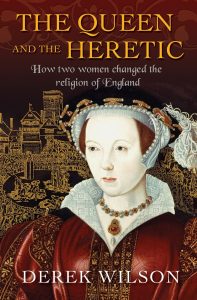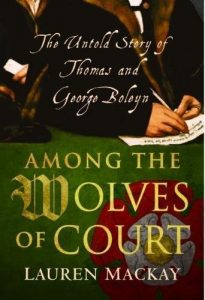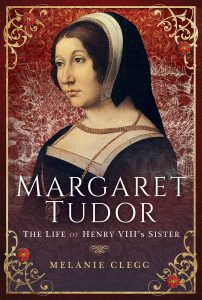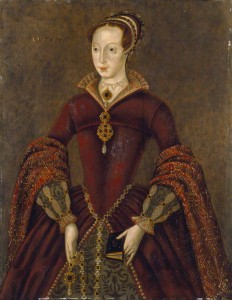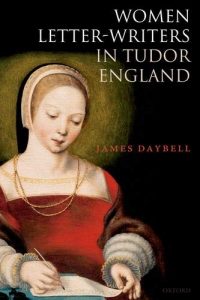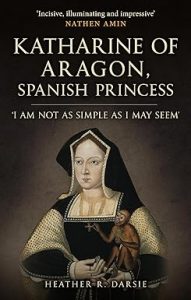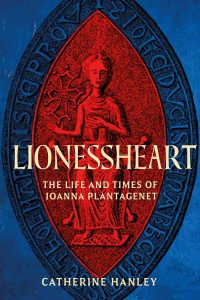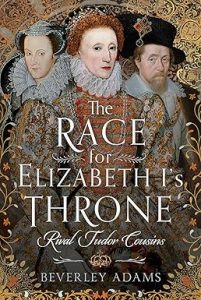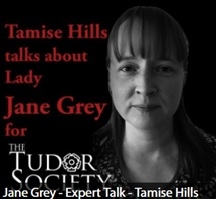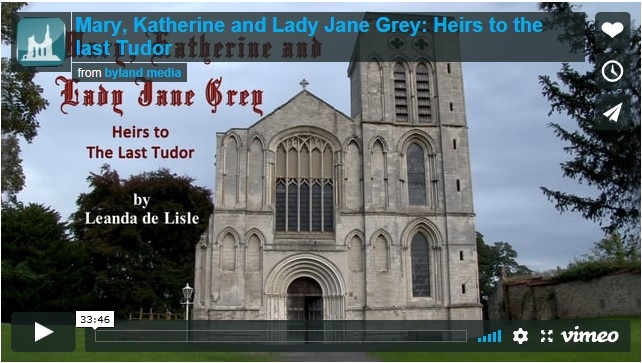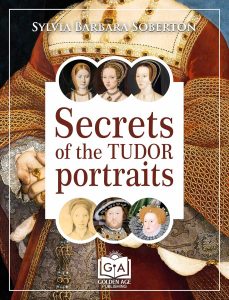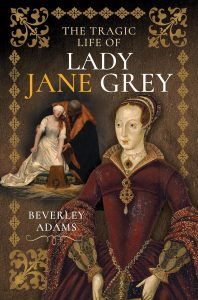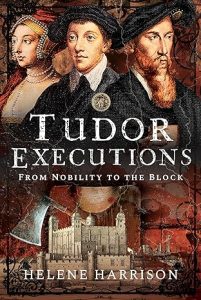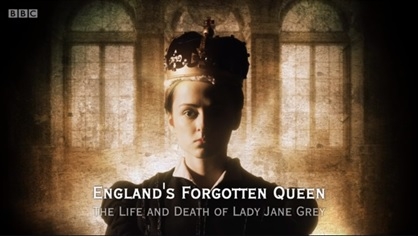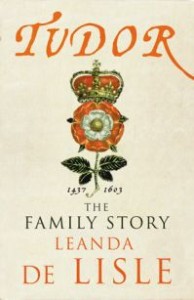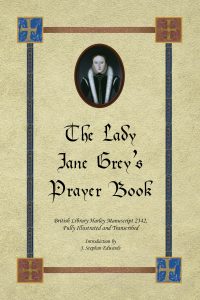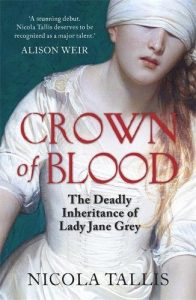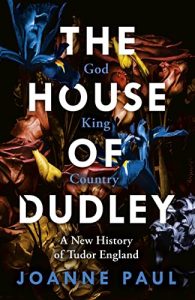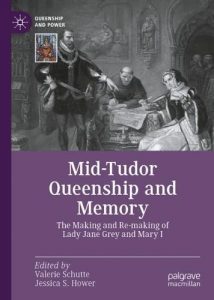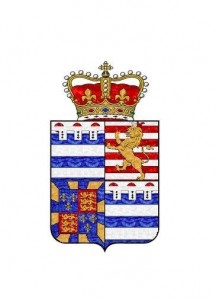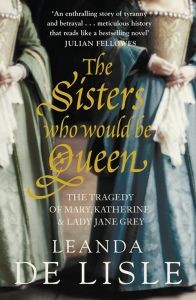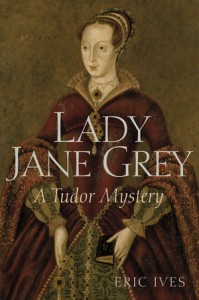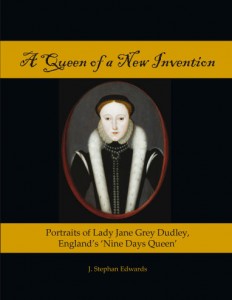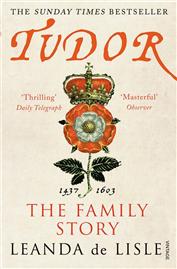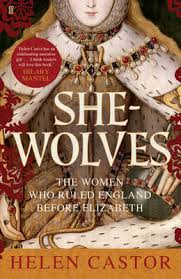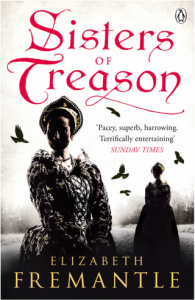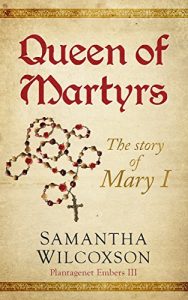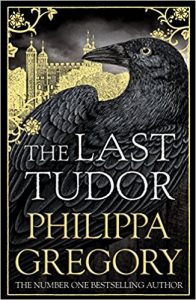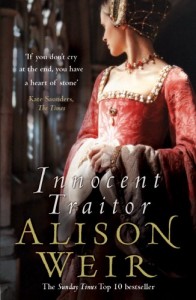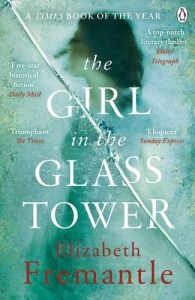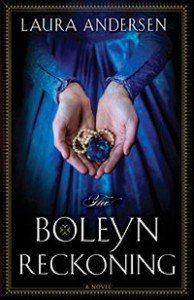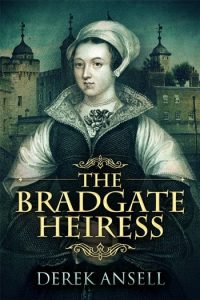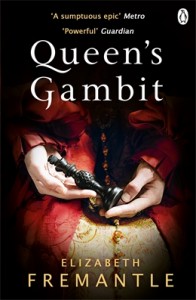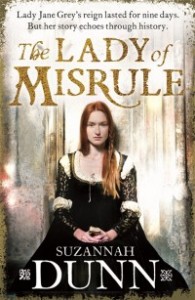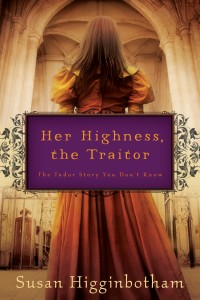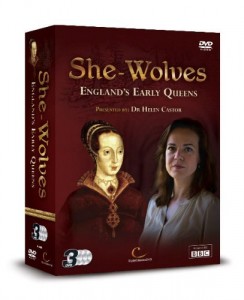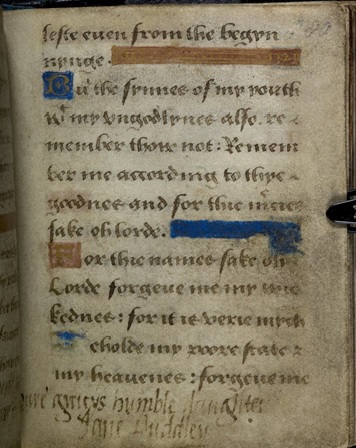Lady Jane got a mention in ‘A Tale of Two Sisters: Elizabeth I and Mary I’ on the Yesterday Channel.
Narrator – ‘The reign of Edward VI would be a short one. Early in 1553 he fell ill, on the 6th of July that year, the 15 year old King died. The death was kept secret by his government for days, there was a plan to fix the succession.’
Anna Whitelock – Edward was more than aware Mary was waiting in the wings and had every intention of restoring Catholicism. All the work that had been done in establishing the Protestant Church would be immediately undone.
Rebecca J Emmett – Edward doesn’t have time to go to Parliament, he is too ill. So in the April before his death he writes the devise for the succession, which excludes both of his sisters Mary and Elizabeth from the line of succession.
Kate Williams – He changes the succession to ensure that his first cousin once removed, Lady Jane Grey, who happened to be married to the son of his Protector, the great and powerful Northumberland. She was a girl that really no one had ever heard of and that he thought would secure the succession. It would be a Protestant country forever and ever.
Tracy Borman – The Lady Jane Grey accession was a Protestant coup that was the point.
Narrator – Word of the King’s death spread. From her vast estates in East Anglia, Mary began raising an army. England was on the brink of civil war.
Narrator – In the summer of 1553 England was in crisis. Its boy King, Edward VI had died but who would rule after him? In his dying days, Edward had anointed his teenage cousin, Lady Jane Grey as his successor. The Protestant King had hoped to exclude his Catholic sister Mary from inheriting the crown.
Rebecca J Emmett – About 3 days before Edward’s death, Mary’s riding to court to see her brother, believing that he has been unwell, is now better and she had been invited to court.
Kate Williams – She was going to be seized and imprisoned, so that Lady Jane could ascend the throne.
Anna Whitelock – They had fundamentally underestimated Mary. She got as far as Hertfordshire and she got a tip off from court, from a supporter, saying basically, do not come, there is a plan to capture you.
A.N.Wilson – She did not have much good luck in her life but this was good luck. One of her supporters rode like billy-o through the night and got to her and told her that she was the Queen of England.
Rebecca J Emmett – She turns around and rides with all of her retainers into East Anglia and starts to muster her troops.
Tracy Borman – It was an area where Mary held extensive estates, so she could call on a great deal of support.
Anna Whitelock – She thought that this was her chance that God had protected her through all of her life to take her place on the throne and restore Catholicism. So this was absolutely her divine mission. Mary was absolutely determined and prepared to fight for her throne if she needed to.
Kate Williams – And that is where this Tudor, pig headed, stubborn attitude comes in.
Narrator – On the 10th of July, Edward’s council led by the ambitious Duke of Northumberland, declared Lady Jane Queen of England. The Council seemed to hold all the cards. They had London, the Tower and its armoury.
Narrator – Northumberland set about raising forces to apprehend Edward’s sisters, Mary and Elizabeth.
Kate Williams – The minute he left other people started saying ‘Is that really a good idea?’ The Privy Councillors suddenly started to panic.
Rebecca J Emmett – When Jane is proclaimed Queen there is a stony silence around London. It is a sort of an eerie experience, nobody is cheering for Queen Jane.
Tracy Borman – They saw her for what she was, she was a usurper. Albeit, an unwilling one.
Kate Williams – They wanted the daughter of Henry VIII to be Queen. The people wanted the correct person to be Queen, and that was Mary.
Narrator – There would be no civil war, no armed conflict at all. As the frightened Jane waited in the Tower of London, people across the country declared their allegiance to Mary instead. Even Northumberland himself was soon forced to face the inevitable. Six days after leaving London to arrest Mary, he recognised her as Queen.
Narrator – At once Mary marched on London to begin her reign. Her sister Elizabeth was left in a precarious situation, she was Mary’s heir, and she could be an ally or a threat.
In early August, Elizabeth met her sister outside London. Accompanying her were a thousand horsemen. Her gentlemen dazzled in green and white Tudor livery. It was a statement of support for Mary but also a reminder of Elizabeth’s own status and power. Together the two sisters rode into London.
Kate Williams – London had been waiting. They had swept the streets, covered the buildings with tapestries and Mary came in looking every inch a Queen.
Rebecca J Emmett – She is dressed all in purple, royal regal colours. She is festooned with jewels and pearls. She is really presenting herself in the most spectacular fashion, so that people immediately understand that she is the centre of attention.
A.N.Wilson – Mary didn’t have a stage presence. She was awkward, she was shy but nevertheless it was a magnificent spectacle. As this rightful Queen, who was going to restore unity and peace came into London. Followed by the statuesque, tall, by now strangely ethereally beautiful sister, Elizabeth.
Anna Whitelock – Both Mary and Elizabeth had a very keen sense that they were both Henry’s daughters. There was a real sort of sense of Tudor legitimacy flowing through their veins.
Tracy Borman – This was a show of solidarity, this was intended as to show off the strength of the Tudor dynasty but there was an awful lot more simmering beneath the surface of this display.
Kate Williams – Elizabeth was above all a politician and she wanted political influence for herself and to protect her interests and she knew that the best way was to throw herself behind her sister. When she rode in, yes it was all about Mary the Queen but it was also about Elizabeth behind her.











